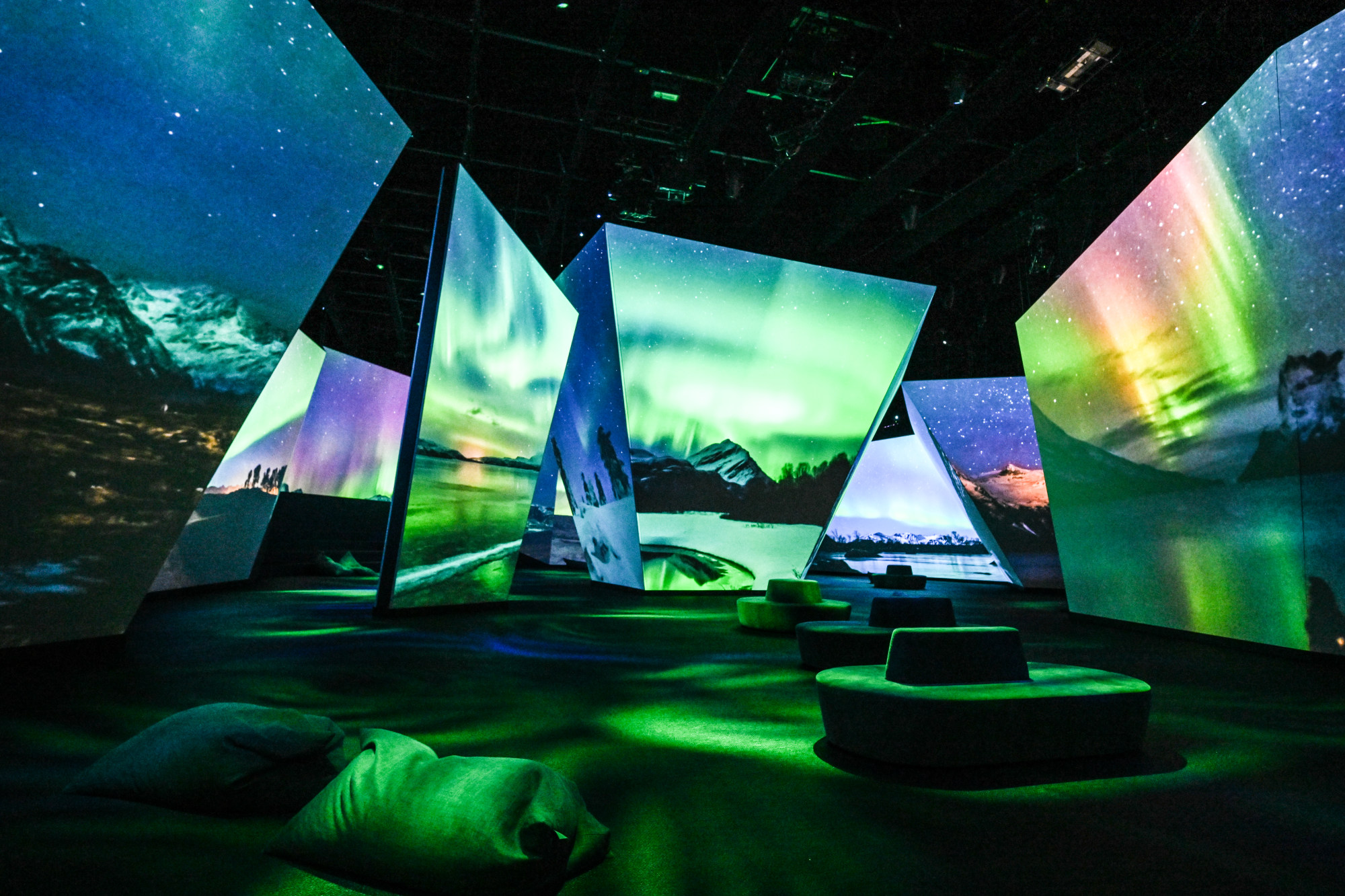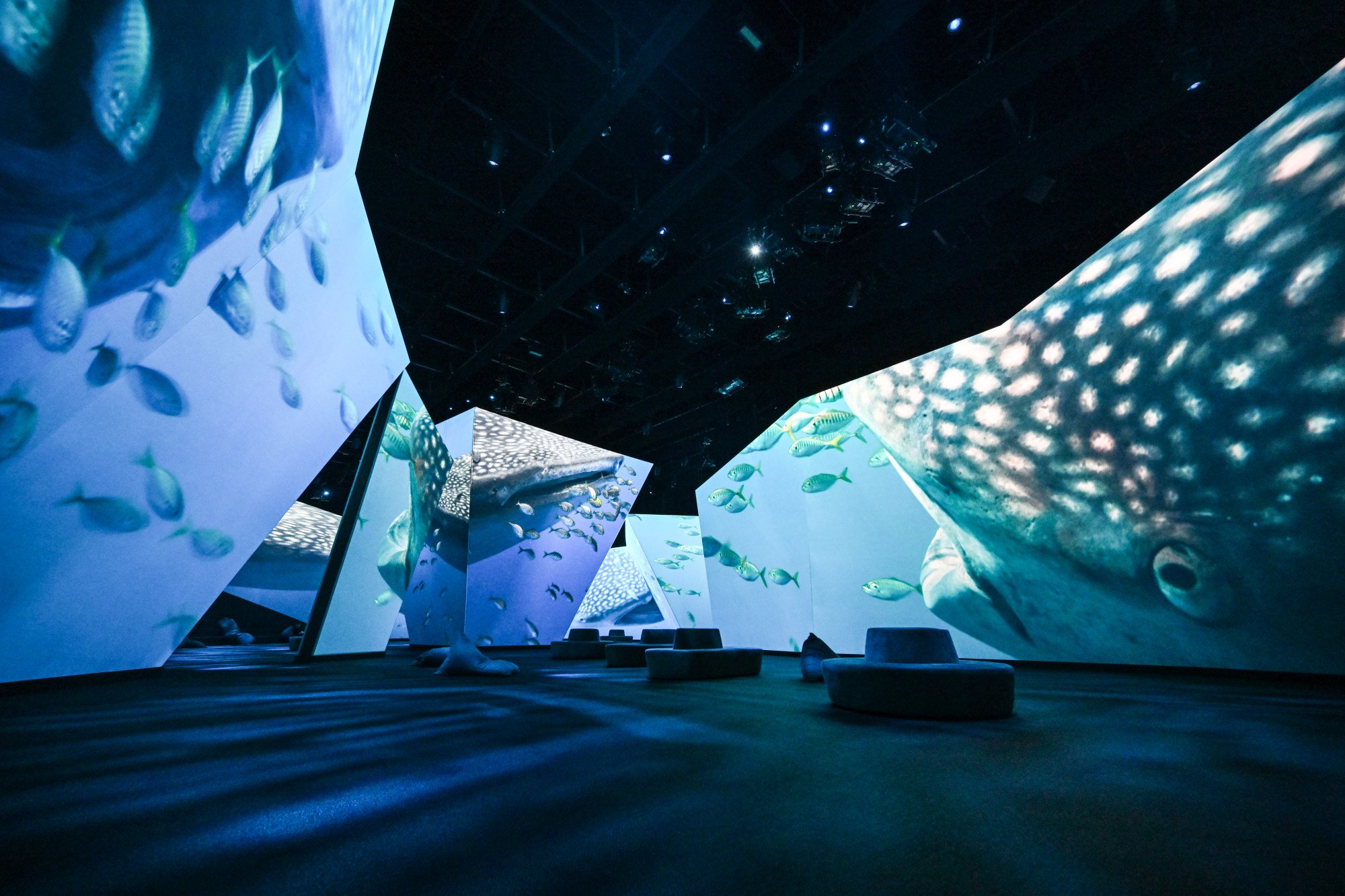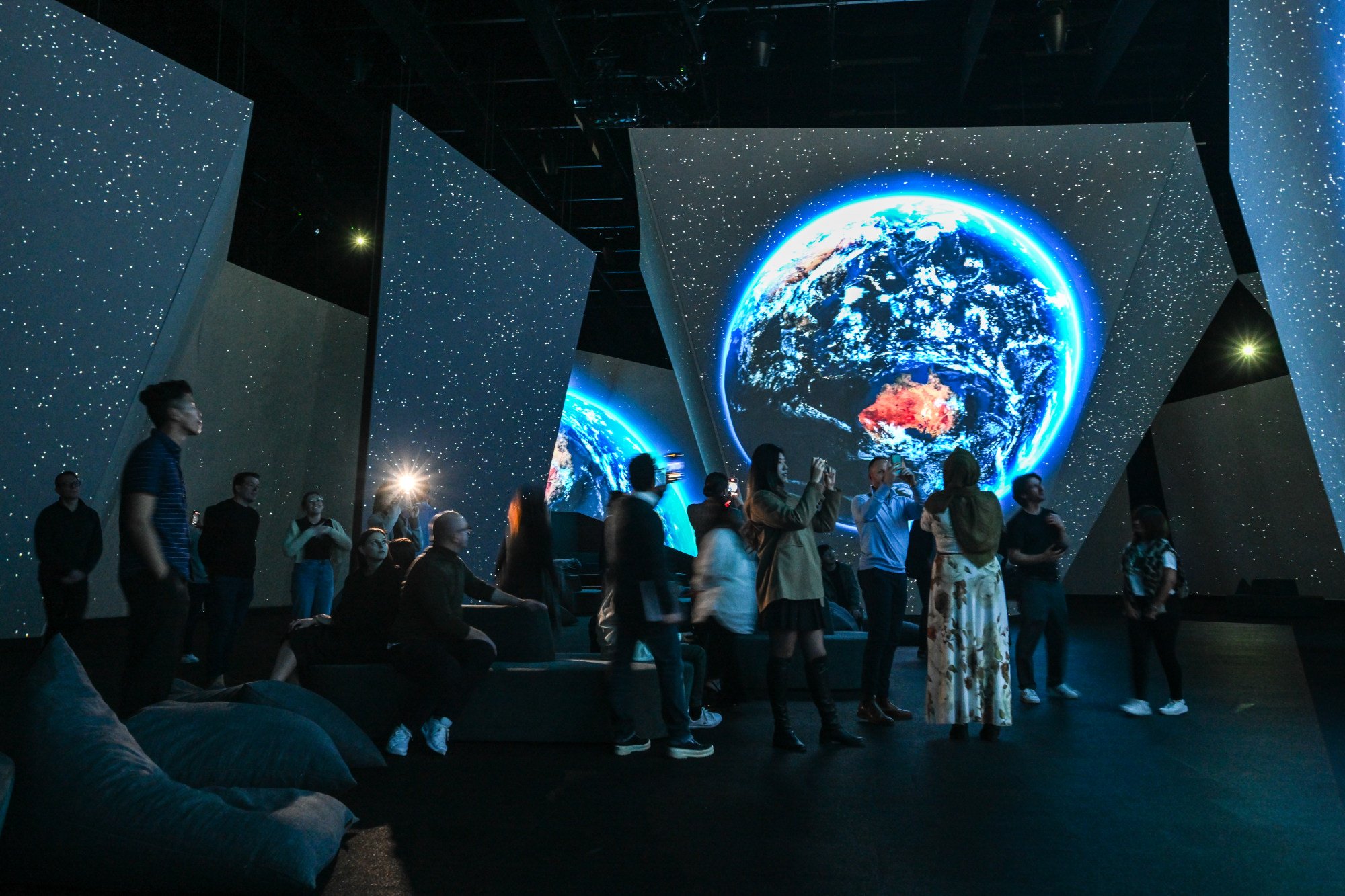
BBC Earth Experience, Melbourne makes immersive audio-visual installation out of David Attenborough natural history documentary
- British broadcaster has used footage shot by its Natural History Unit for a series by presenter David Attenborough for a 360-degree, surround-sound installation
- The second of its kind, the attraction in Australia makes visitors feel they are in the middle of a succession of wild environments on the seven continents
Not all travel experiences are relaxing, especially if you are interested in the natural world.
Climbing a mountain, for instance, takes physical and logistical effort. Patience and luck also play a big part. You could crouch in that Rwandan forest all day and not see a single silverback gorilla, or camp out on the Norwegian snow only to have a cloudy night obscure the aurora borealis.
It’s estimated that more than a billion people have tuned into his television programmes, made with BBC Studios’ Natural History Unit, the world’s biggest producer of natural history programming.

Footage shot by Attenborough and his team for the Seven Worlds, One Planet series is now being used in the BBC Earth Experience, an attraction that has just opened in Melbourne, Australia.
Taking up 1,608 square metres (17,300 sq ft) of the Melbourne Convention and Exhibition Centre, the second BBC Earth Experience – the original is in London – is a 360-degree immersive audio-visual installation.
‘He just loves to create’: David Hockney holds first immersive exhibition
Using the latest digital technology, everything from vast landscapes to extreme close- ups is projected onto massive screens, several of which are angled, to create a feeling of being enclosed within wildly varying environments on all seven continents.
In the main gallery, every visible wall bears a screen; the floor plan branches out into pod areas, which all face an inverted trapezoidal prism in the centre. Layers of images can be seen wherever you turn.
The presentation, which lasts around an hour, runs on a continuous loop. For the most part the clips displayed on the various screens are similar, giving viewers a variety of angles and moments. At other times, every pair of eyes will see the same striking imagery.

A soundtrack combines noises from nature – guttural growls, soft twittering, crunching ice – with a symphonic score and narration from Attenborough. The result is a visceral and deeply moving trip around Earth.
We enter the main gallery to discover a fight has just broken out between two southern elephant seals in Antarctica. This is the largest seal species and two massive bulls, each weighing four tonnes, repeatedly slam into one another. It’s brutal, although the gentoo penguins surrounding them seem unconcerned.
Soon the penguins are ubiquitous. Every screen displays a monochromatic vista of hundreds of the flightless black-and-white seabirds with their vibrant orange-red bills.

Next the room is washed in a blue light. Lounging on the carpet, snuggled up in some of the many bean bags scattered throughout the pods, we hear bubbling water and lapping waves, and we’re underwater with a southern right whale.
Attenborough doesn’t linger too long in any one spot, so we’re treated to it all – oceans, rivers, mountains, deserts, forests, prairies. The crack of lightning and boom of thunder that precede a North American tornado give me goosebumps, and the delicate glow of thousands of fireflies is beautiful.
The narration is sparse so the drama and majesty of the footage is what really speaks to us; when Attenborough does chip in, he reminds us how fragile it all is. The BBC Earth Experience is intended to educate as much as entertain, and we’re reminded that the incredible diversity of life on our planet needs to be better cared for.

Beyond the main gallery are “breakout zones” - including Cute Life, a collection of images of baby animals and a cubby hole kids can climb into; areas dedicated to images of insects; and Water World, a room containing screens projecting underwater images.
As you approach the exit, the final installation is devastatingly effective. Earth, our home, is suspended peacefully in the darkness of space. As you raise your eyes to the curved screen hanging from the ceiling onto which images of the planet are projected, Attenborough reminds us that nature is our ally, but is suffering and needs our help.
“We can do it, we must do it, then there will be a future for planet Earth and us all,” he says.

